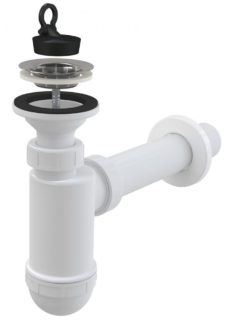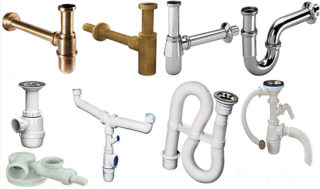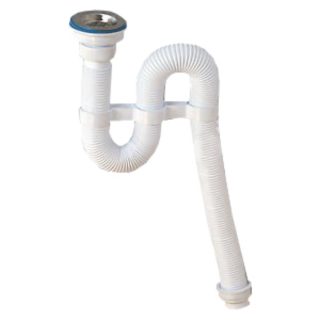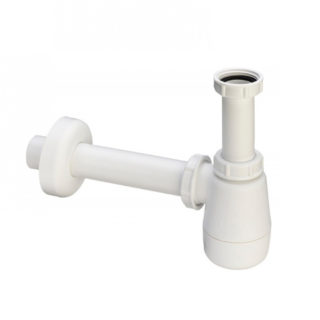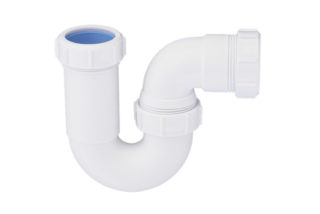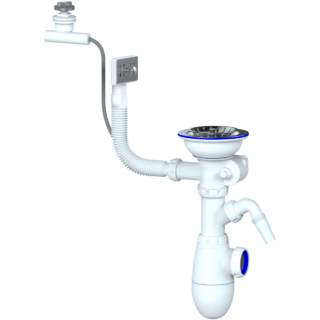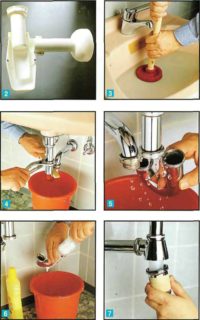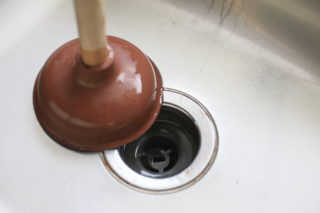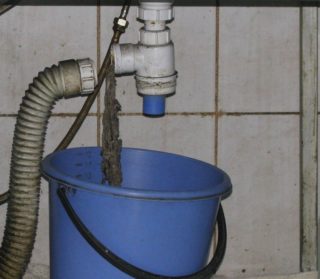When the water in the sink stops flowing, then there is a blockage somewhere. Most often, this place is exactly the siphon. You can fix the problem yourself if you have a step-by-step guide like this on hand.
- What is a siphon and why is it needed
- Siphon device and principle of operation
- Corrugated siphons
- Bottle siphons
- Pipe siphons
- Automatic
- Semi-automatic
- Manual siphons
- Cleaning the siphon without disassembling and removing
- Cleaning with a hydraulic pump
- Cleaning with a plunger
- Using soda
- Use of chemistry
- Cleaning with a plumbing cable
- Cleaning with disassembly of the siphon
What is a siphon and why is it needed
In order for the siphon to effectively cope with the water drainage function, before purchasing it, it is necessary to first calculate the load with which it must cope.
Siphon device and principle of operation
On the shelves of plumbing stores, you can find a large number of different types of siphons, which can be divided into groups, according to their place of use for:
- garage;
- shells;
- kitchens (for a washing machine);
- baths;
- washing machine;
- bathroom;
- shower cabin ("ladder").
- corrugated;
- bottle;
- pipe.
Tube and bottle models can be attached to any equipment. As for corrugated models, it is better not to use them in the kitchen, due to the fact that they get dirty very quickly and often require cleaning.
There are also flat siphons that are relevant for shower trays or other places where the connection is made in a confined space.
Siphons can be equipped with additional taps for connecting several devices or devices, as well as an overflow system that protects the siphon from overflow.
Corrugated siphons
For attaching to a sink or other plumbing fixtures, there is an upper compartment that has a drain grate and a bolt with a clamping nut for fastening. These models are not equipped with an overflow or additional fittings.
Bottle siphons
- The branch pipe that is required to connect the siphon.
- Outlet (outlet pipe), which is connected to the sewer.
- The flask that represents the siphon reservoir.
- Clamping nuts required for assembly of the structure.
- O-rings.
The work of this type of siphon is as follows. A certain amount of water accumulates in the flask, which creates a water seal. Among other things, large particles of debris also accumulate in the bottle.
These siphons are the easiest to clean and are therefore the most popular. To clean it, you just need to disconnect the outlet pipe.
Pipe siphons
- Top piece that can be installed on a sink, bathtub or sink. Fastening takes place using a special bolt.
- The middle element is a rigid S or U shape pipe.
- Bottom element for output to the sewer.
All modern versions of the siphon are divided according to the method of work:
- automatic;
- semi-automatic;
- manual.
Automatic
- with a handle for opening the cork;
- siphons with a click-clack device, when the drain cover is attached to a special pin, which is activated with one push.
Semi-automatic
This type of siphon is equipped with a device that prevents odor from spreading throughout the room. Among the distinctive design features, the following can be noted:
- the drain cover is set in motion by a cable;
- to activate the movement of the cable, you must use the handle that is located on the overflow hole.
Conveniently, there is no need to wet your hands in water to activate the drain cover.
Manual siphons
This version of the siphon is simplified as much as possible. The drain cover is located separately and in order to initiate the drainage of water, you just need to get it out of the hole. To fill with water, the hole must be closed. The lid can be held separately or attached with a chain to the overflow compartment.
Cleaning the siphon without disassembling and removing
- hydraulic pump;
- plunger;
- plumbing cable;
- soda;
- chemistry.
Cleaning with a hydraulic pump
The hydraulic pump is able to cope with sufficiently dense and strong blockages. The cleaning process is carried out using water, which is supplied under high pressure, thanks to which it is possible to clear the blockage. The principle of operation is as follows:
- The pump is supplied with water and connected to the drain hole.
- Under pressure, there are several outbursts of water and the blockage is removed.
Cleaning with a plunger
It is necessary to use a plunger as follows:
- A small amount of hot water should be drawn into the tub or sink.
- The rubber cover of the plunger should cover the drain hole.
- After several continuous taps on the handle, it is necessary to tear off the rubber nozzle from the hole.
Thanks to such movements, pressure is created in the drain system, which breaks down the blockage into smaller fractions and allows them to pass further into the sewer.
This is the very first manual method to resort to in the event of a blockage.
Using soda
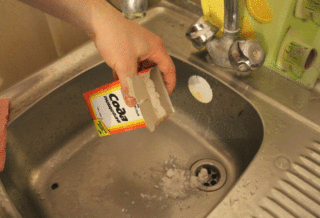
- Mix half a glass of vinegar with the same amount of baking soda.
- Pour into the drain and cover with cling film.
- Wait 30-40 minutes.
- Clean with hot water.
In the same proportions, you can use salt and soda, but after pouring the mixture into the drain, you must pour it with a glass of boiling water.
Use of chemistry
Modern chemicals such as: "Mister Muscle", "Tiret" or "Mole" are able to quickly deal with the blockage. The process is almost the same, but it must be borne in mind that the tool must be selected based on the type of pipes.
Almost all of them are used according to the following instructions:
- The product is poured / poured into the drain.
- Withstands a certain time.
- Rinsed with warm water.
It is very important to comply with all safety standards when working with such products and strictly follow the instructions.
Cleaning with a plumbing cable
If none of the above means helped, then you need to go to a radical method - cleaning with a plumbing cable. You can do this yourself or call a plumber:
- The cable is gradually inserted into the drain hole.
- With the help of circular motions, the blockage is eliminated.
Cleaning with disassembly of the siphon
- A bucket must be installed under the siphon so that water flows into it.
- We unscrew the siphon sump, where all small and large elements fall.
- Remove the blockage from the sump.
- Carefully inspect the siphon for accumulation of large amounts of grease, then you can finish cleaning. If there is a large accumulation of fatty deposits on the walls, it is recommended to clean it with special chemical detergents.
- It remains only to put the sump in place and screw the siphon back. After checking, you can continue to use the drainage system.
It is very important, when reassembling, to ensure that the gasket on the sump sits in place to avoid leakage.

